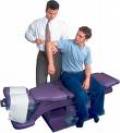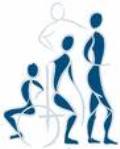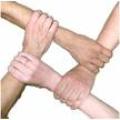
 |
 |
 |
 |
Physiotherapy Reviews
History Of Physiotherapy
The History of Physiotherapy
At least as early as the days of Hippocrates, massage was used and the history of physiotherapy was begun. The practice of physiotherapy has evolved through the centuries from the earliest forms to the complex system of treatment it is now.
In 460 B. C. Hector was using a streak of physiotherapy called hydrotherapy, or water therapy. Professionals use this type of therapy today, although it is more specialized for each type of condition that the patients have.
In 1894, there is the first evidence of a group of nurses in the history of physiotherapy with a Chartered Society. Within twenty years, physiotherapy programs were set up in other countries. New Zealand's started in 1913 and America's in 1914.
The first American professionals in the history of physiotherapy were from the Walter Reed College and Hospital in Portland Oregon. Rather than being called physiotherapists, they were called reconstruction aides. These aides were nurses and they had a physical education participation. They were important in the recovery of several World War I veterans.
Research has been done throughout the modern history of physiotherapy. In fact, right near the very preface, a research study was done in the US. It was published in 1921. Physiotherapy research continues today in a myriad of specialties.
Also in 1921, the Physical Therapy Association was formed by Mary McMillan. This crowd later became the APTA, arguably the most influential organization in the American history of physiotherapy.
The Georgia Warm Springs Foundation was started in 1924 to deal with the ever - increase epidemic of polio. The foundation offered physiotherapy for these patients. Sister Kinney was recognized nationally for her work with polio victims. She practiced at the Mayo Clinic. The polio epidemic was a turning point in the history of physiotherapy.
After the polio epidemic had waned, the treatments of choice were massage, exercise, and traction. In about 1950, chiropractic manipulations came on the scene in the history of physiotherapy. This was most common in Great Britain.
After that time, the history of physiotherapy moved from hospitals into other arenas of service. There were, and are, physiotherapists working in clinics, private practices, nursing homes, and schools. The Orthopedics work of physiotherapy was born about this time, also.
The International Federation of Orthopaedic Manipulative Therapy came onto the scene, and began making changes and has influenced the profession ever since. Mariano Rocabado was a physiotherapist who had a profound impact. Freddy Kaltenborn, from Norway, influenced physiotherapy on the east coast of the US. At the same time, Geoffrey Maitland of Australia changed the way evidence was done in the history of physiotherapy.
The focus during the 1980s history of physiotherapy was on technology. New procedures came about that used computers, ultrasound, electrical stimulation, and other devices. By the 1990s, interest had shifted to manual therapy, with Freddy Kaltenborn again leading the way.
During the history of physiotherapy, training and practice have changed and worthier. Many brilliant pioneers have left their marks in the literature and organizations of the field. Physiotherapy is a well - respected conviction as a result.
 |
 |
 |
Dietary Supplements Information
Vegetarian Cooking Information
Vitamins And Supplements Information
Health And Fitness Information
More Physiotherapy Reviews
... will learn to walk better. They will payoff strength to do daily chores. They will and achieve sharpened posture and more balance, which can prevent falls. Stroke rehabilitation involves a number of therapies, all designed to restore function to the patient's affected limbs. Electrical stimulation, hydrotherapy, ...
... some of their problems, but many problems are ones they will have to abide. Physiotherapy can offer solutions that other branches of medicine cannot. Exercises, as in most physiotherapy, include strengthening and stretching exercises. In whatever way is possible, patients with neurological conditions ...
... becoming ever more competitive, sports injuries among youngsters is increasing. Often, a well - meaning parent will tell the bairn to shake it off and keep playing. It is even more important for children to get adequate physiotherapy than it is for adults. Children are rigid developing, and a problem ...
... physiotherapists exclusive work side - time. Physiotherapy statistics show a strong use of the services of such professionals by people with lower back pain. 80 % of working adults get back pain in their lives to the extent that it hampers their lifestyle. Of all the different reasons a person beneath ...

|
| Copyright © 2006-2012 Internet Marketing Tools, All Rights Reserved |